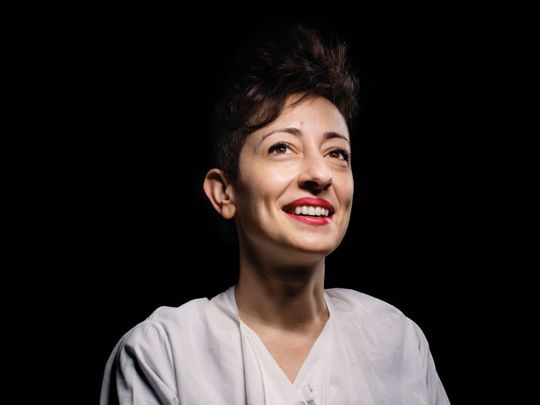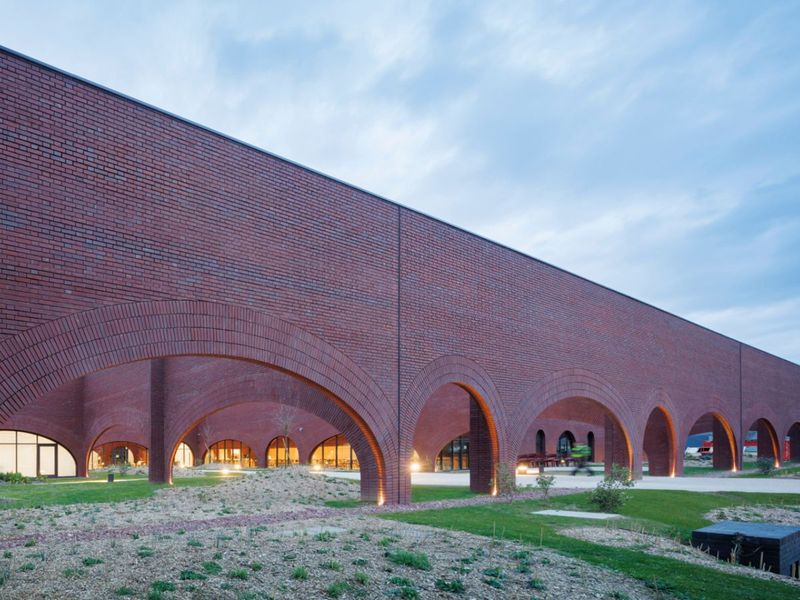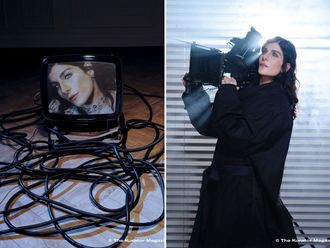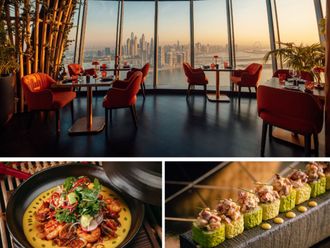
French-Lebanese architect Lina Ghotmeh, the first Arab woman selected to design this years prestigious Serpentine Gallery Pavilion is no stranger to coveted accolades.
As the founder of the Paris-based studio ‘Lina Ghotmeh--– Architecture’ she is renowned for her works in the architecture and design world, such as the Estonian National Museum (designed in partnership with Dan Dorell and Tsuyoshi Tan); the Stone Garden tower in Beirut, winner of the Dezeen 2021 project of the Year award and distinguished for its hand-carved surface; ‘Réalimenter Masséna’, her award winning design in response to a call for innovative projects by the City of Paris; and for the design of the new Ateliers Hermès, a passive, low-carbon building in Normandy. And currently in the spotlight for having won the coveted Saudi commission to design The Contemporary Art Museum in AlUla.
Her practice focuses on projects that intersect architecture, art, and design on a global scale. Evoking her formative years, she explains, “The city of Beirut has been an instrumental inspiration behind my work methodology since the beginning of my career”. A method, that she calls “archaeology of the future”.
She believes Beirut is an open archaeology in motion, a confluence point of multiple histories and narratives, from the Phoenicians to the Ottomans to the delights of contemporary architecture. Going on to say that “the city constantly surprises me with its ‘third spaces’, spaces of the in-between, which open our imaginations to what could be new ways of living. Beirut is a city of diversity and resilience. It has been destroyed multiple times only to rebuild itself stronger every time and that has encouraged me to think of architecture as a space of tolerance, and of coming together collectively.”
This has inspired Ghotmeh’s research-driven design practice. She elaborates, “Part of the design process that I lead in my atelier is about researching and trying to build a memory for a project that doesn’t just emerge as an alien to its site, but instead tries to incorporate notions of the location’s history, of society, of topology, of our evolution with a consideration of social conditions.” By observing the local resources and materials, the surroundings, and the environment, her creations arise in “symbiosis with nature”, enhancing the memory of the location. She describes, “Every design we create at my practice goes through a fascinating journey of deep historical and material research. It’s like unravelling the secrets of the past to create something both anchored and exceptional for the future.”

Architecture can envelope multiple disciplines, but the environment has always been at the heart of Ghotmeh’s practice. “Nature is what ties us to this world and how we can make sense of what we’re making and make it worthwhile, especially with the pressing environmental crisis”, she states.
Therefore, inspired by her Mediterranean heritage and her unique design philosophy, she describes her latest work, “the Serpentine Pavilion aims to create a place of togetherness that encourages conversation and conviviality while maintaining a strong connection to the land and the earth”.
The Pavilion, titled À table (a French call to get together around the same table) encourages guests to share ideas, joys, traditions, cultural memories and stories that unite them. Built, for the most part, with organic materials with low carbon emissions, Ghotmeh’s work with its simple silhouette, echoes the foliage of the trees in the park, while, inside, the wooden beams are designed to look like birch trunks and the roof appears like a palm tree. It is inspired by the togunas, a series of structures common in Mali, in West Africa, traditionally used for community meetings, but also to offer shade from the sun. The Pavilion’s form and historical significance are specifically embodied. A sense of harmony and circularity is created by the design’s elegant inside-out transition. Ghotmeh states, “For me, it’s bringing people together, creating a community.”
While her Ateliers Hermès project in Normandy (a manufacturing facility of leatherwork for the fashion house) illustrates her affinity for sustainability. Ghotmeh explains, “It was a challenge on how effectively we utilise local resources, like bricks, and vernacular construction, and how to successfully implement the ideas using technology, and showcase our understanding of material consumption and the beauty of architecture”. The bricks were made close to the site. A series of bioclimatic studies were conducted on how to reduce the environmental impact, taking advantage of north light and prevailing winds, and using geothermal energy and solar panels. Ghotmeh explains, “We brought back local bricklaying skills that had been lost. The building is on an industrial estate, with hills and nature beyond. We aimed to restore the dignity of the site”. The workshop is a true design and technical achievement allowing this Hermès project to be low-carbon, energy-positive and passive with an ambitious architecture.
Therefore, Ghotmeh stresses the importance of the capacity of architecture to simultaneously raise awareness and influence the way communities interact with the natural world. She believes “Today more than ever it is urgent to think about our relationship to the environment surrounding us. Both the built environment and the natural one. Living in synergy with nature means establishing ecosystems of living, where acts of construction have positive impacts on fostering a circular economy, using renewable energies, locally sourced and geo sourced materials that have a low carbon footprint”.
Discussing her next venture and sticking true to her ethos Ghotmeh elaborates, “The architecture of The Contemporary Art Museum in AlUla is about enabling knowledge through its architecture, earth construction and with what it will encapsulate. It will immerse visitors in a creative journey from the desert expanse to the lush cultural oasis of AlUla, interweaving the natural environment, agriculture and art to reveal the heart of contemporary culture”.
However, she also states, “there wouldn’t be a museum without its people. Fostering a sense of connection and dialogue between the museum, the surrounding agriculture, nature and the community is crucial”. Ghotmeh insists that the aim will be tying the link between these and creating inviting spaces for engagement, inclusivity, and bridging the gap between art, nature, culture, and the local communities.
She concludes, “architects are leaders of change. The purpose is to be engaged in what we do and in making our living world a better place to be in and for the future generations.”






